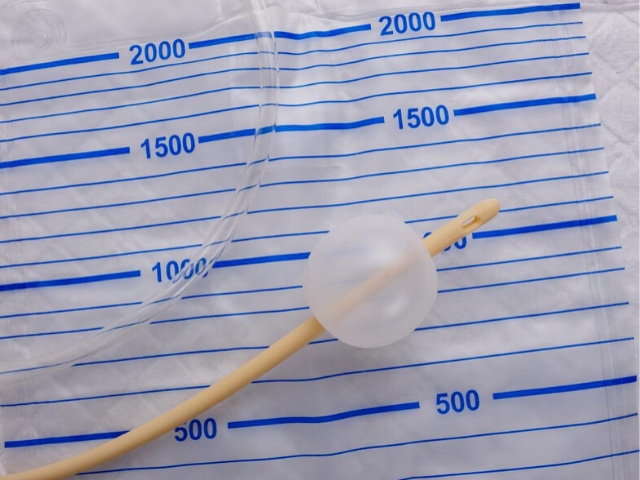A mother always wants to take the right decision for her unborn baby from the period of conception to birth. Knowledge related to labor and delivery is important for a mother. Some women fail to experience labor due to some reasons, in that case, induction of labor is a must.
This article describes Foley bulb induction, its procedure, risks when it is recommended, and some other methods of labor induction.
All You Need to Know about Foley Bulb Induction
What is Foley Bulb Induction?
It is a method for inducing labor. In this type of induction, a catheter is inserted into the cervix by the doctor which dilated the cervix and helps the baby to come out.
A Foley catheter is a long, rubber tube with an inflatable balloon on one end that is to be filled with a saline solution when the catheter is in the womb.
When the balloon inflates inside the cervix, the cervix dilates to 3 centimeters. It also increases tissue’s response to oxytocin and prostaglandins, hormones that help in the induction of labor.
It is a safe procedure. Chances of infection and complications are also rare. The decision to have a Foley bulb catheter induction should be discussed with the doctor because there are both advantages and disadvantages to this approach.
Benefits of this induction include:
- Cheap
- Easy to use
- Easily available
- Low-risk in most of the people
- While doing a Foley bulb induction the doctor should monitor the heart rate of both the mother and the baby.
Procedure
The procedure of the Foley bulb induction includes following steps:
- Baby’s heart rate will be monitored for at least 20 minutes by the doctor.
- Doctors confirm that the baby is in a head-down position.
- The medical staff will help the mother to lie in a lithotomy position, which involves her lying on her back and legs in special stirrups.
- The perineal area is cleaned using a medical solution.
- The tip of the Foley catheter is moved through the opening of the cervix using forceps. The balloon of the catheter will be beyond the cervix but outside the amniotic sac.
- The Foley balloon will be filled with 30 milliliters of sterile water.
- To create additional tension the doctors must tape the Foley catheter to the women’s thigh.
- To dilate the cervix further the doctor must put a more sterile solution to the Foley balloon.
When the cervix dilates by 3 centimeters the Foley balloon will fall out. When the cervix dilates up to 10 cm and the woman experiences frequent uterine contractions then the delivery is possible.
When is it Recommended?
Foley bulb induction is recommended in the following situations:
- When there is excessive amniotic fluid
- High blood pressure
- Gestational diabetes
If a pregnant woman meets the following criteria then a doctor recommends Foley bulb induction:
- If she is older than 18 years of age
- If her gestation period is over 37 weeks
- If she is pregnant with one baby
- If amniotic membranes are intact.
When a woman chooses to have an induction this is known as an elective induction. This is preferred when labor does not start naturally.
Benefits of Foley Bulb Induction
Some benefits of this are mentioned below:
- When a woman wants to try a drug-free induction method then is Foley bulb induction is suggested by the doctor. Sometimes a Foley bulb is enough to start labor without the use of drugs and hormones.
- Women who had a previous history of c-section selects this option because it is a safer way to induce labor.
- If a woman wants to spend less time in labor then Foley bulb induction is preferred along with misoprostol or synthetic oxytocin.
- Usually during labor cervix of a woman dilates naturally. But if it hasn’t shown any signs of dilating, then a doctor recommends Foley bulb induction.
Is a Foley Bulb Induction Painful?
The insertion of a Foley catheter can be a bit uncomfortable, and even quite painful. But the pain subsides after some time. Nitrous oxide (laughing gas) is recommended by the doctor to make the insertion process less unpleasant.
Risks of Foley Bulb Induction
Following are some risks of using a Foley catheter for labor induction:
- This may cause severe pelvic pain
- This may cause fever
- Chances of infection may be increased
- Chances of c-section increases
- This may lead to uterine rupture
- This may cause excessive vaginal bleeding
- Complications of umbilical cord increase in babies
- When it is used along with other labor-inducing medicines then it lowers the fetal heartbeat
- The baby is delivered in a breech position
Other Methods of Inducing Labor
There are various labor inducing methods and a doctor always helps the patient to figure out which option is best for her. Some of the methods other than Foley bulb induction are as follows:
- Misoprostol and other cervical-ripening agents
- Synthetic oxytocin also is known as Pitocin, which triggers contractions
- Membrane stripping
Conclusion
Induction of labor is common. There are many methods to induce labor and among all those one of the commonest methods is Foley bulb induction. This method is the preferred method by a woman because it is safe and has negligible side effects.
References:
https://www.ncbi.nlm.nih.gov/pmc/articles/PMC4556187/













